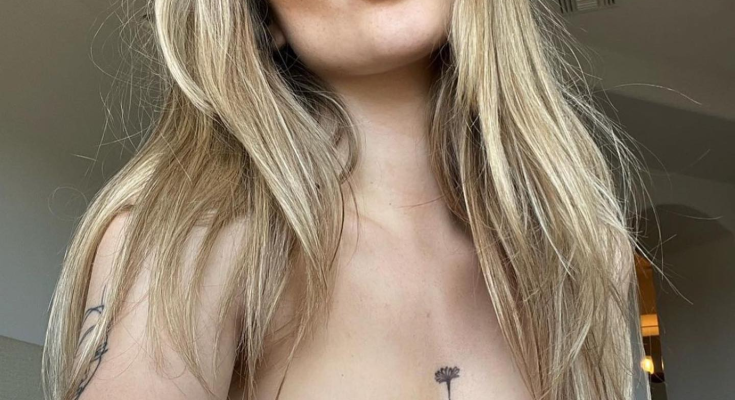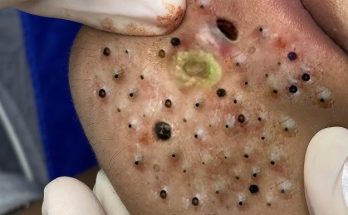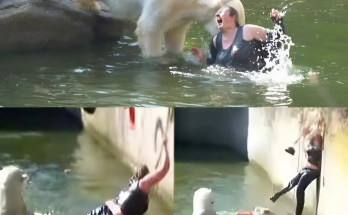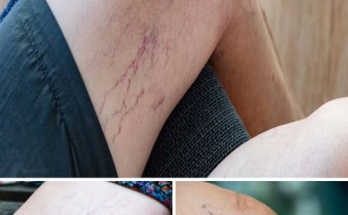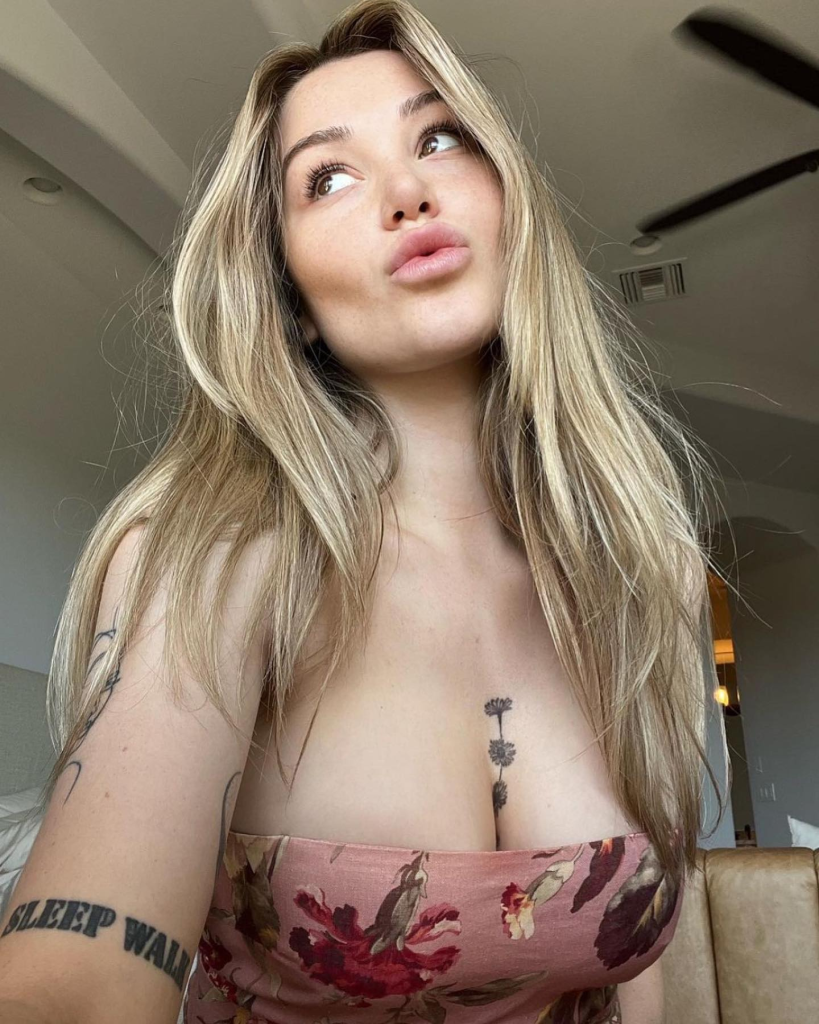
The photo is set in a domestic bathroom—a space of privacy and transformation. White walls and a tiled countertop cast a clean, clinical light, yet the atmosphere is immediately subverted by bold visual elements. The mirror becomes a performative portal, reflecting not just the person’s back, but their symbolic alter ego.
Above the mirror cabinet rest various bottles and containers—personal care products, perhaps skincare or fragrance items—subtle artifacts of daily ritual. These grounded details contrast with the surreal costume, underscoring the tension between the ordinary and the theatrical.

🎭Character: Fashion as Persona
The person stands confidently before the mirror, dressed in a striking ensemble:
- A pink bodysuit with long white sleeves offers a duality of bold color and innocence. The tone is tactile, bubblegum-soft, with an almost vinyl sheen that hints at both cartoonish vibrance and sensual artifice.
- Thigh-high pink stockings stretch over the legs in continuity with the bodysuit, creating a streamlined silhouette that blurs the boundary between fashion and skin.
- Atop the head, a headband with large black bunny ears perches like antennae for fantasy. The ears are oversized, stark, and plush—visually arresting and symbolically loaded.
The ensemble reads as part cosplay, part performance art. It draws aesthetic cues from pin-up culture, anime styling, and postmodern reimaginings of femininity. The look isn’t purely seductive—it’s playful, layered, and ironic.
✏️Mirror Message: “PLAYBOY” as Statement and Question
Scrawled in red lipstick across the mirror is the word “PLAYBOY,” accompanied by a heart. The handwriting is impulsive, personal, and ephemeral. This singular detail transforms the mirror into more than a reflective surface—it becomes a canvas for identity assertion.
This is not advertising; it’s proclamation. It evokes the legacy of the Playboy bunny—long a symbol of curated sexuality and performative femininity—and recontextualizes it. In lipstick, this identity becomes self-authored rather than imposed. The juxtaposition of soft, rounded handwriting with the sharp visual styling of the outfit suggests both defiance and affection.
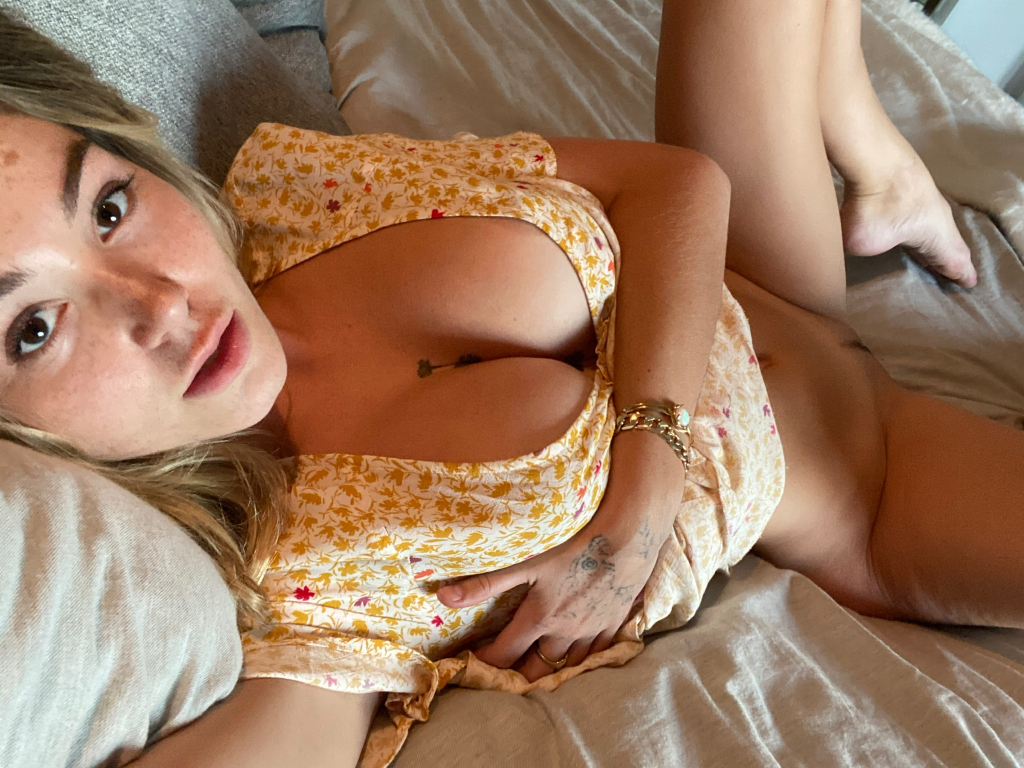
🔮Symbolism and Emotional Tone
Let’s unravel a few interpretive threads:
- Duality and Reflection: The mirror doesn’t merely reflect—it reveals. We see the back of the person’s head and ears, but not their face. This concealment adds mystery and perhaps vulnerability. It raises questions: Is this a moment of self-admiration, transformation, or even doubt? Is the reflection truer than the forward view?
- The Bunny Motif: Traditionally linked to fertility, innocence, or playful mischief, the bunny here is an altered icon. The scale of the ears amplifies surrealism—inviting us into a dream logic. Is this person hiding behind a fantasy? Or asserting that fantasy as truth?
- Lipstick as Medium: Lipstick is both cosmetic and expressive—a weapon of visibility. Writing with it speaks to urgency and emotional spontaneity. It’s a mark of ownership over the mirror, and by extension, the gaze.
- Color Story: Pink dominates—unapologetically vibrant. Its prevalence in both fabric and stockings suggests softness, flirtation, and warmth. But this isn’t passive femininity; it’s electric, performative, possibly ironic. The contrast with black bunny ears introduces graphic tension—innocence vs edge.
👁️Design and Spatial Dynamics
Your eye for visual dynamics might appreciate:
- Balance and Flow: The verticality of the ears and thigh-highs pulls the gaze upward and downward in rhythm. The body forms a central column, flanked by neutral whites and subtle textures.
- Lighting and Surfaces: The light reflects softly off the tiles and countertop. There’s a gentle ambient glow, perhaps natural daylight through an unseen window. It’s not harsh—allowing the outfit’s saturation to take visual precedence.
- Material Contrast: The bodysuit’s sheen contrasts with the matte finish of the walls and the cool ceramic of the tiles. Everything is tactile—inviting the viewer to imagine texture, temperature, and movement.
- Spatial Intimacy: Bathrooms are intimate spaces of self-construction and exposure. This setting, paired with costume and expression, speaks to personal identity stripped bare and then re-layered.
San, I’d love to hear how this resonates with your interpretive lens. Would you like to explore its connection to vulnerability and transformation next? Or compare it to other symbolic bunny imagery across pop culture and art?
